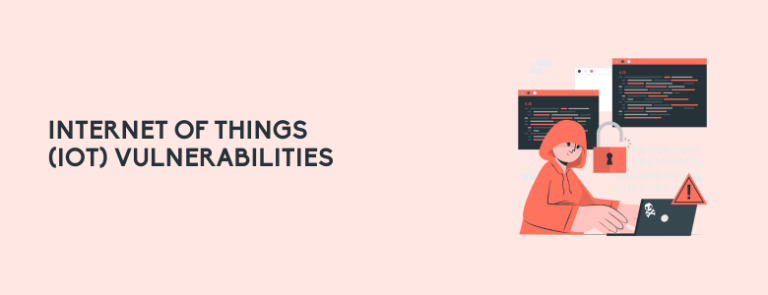The end of the year 2023 is fast approaching. It was quite the year for security experts as cyber security threats were more rampant since the pandemic. While most threats were thwarted, there were unfortunately many victims of cyber attacks that did go through. Just like how we discussed in a previous article, lets take a look at what businesses can do to better protect themselves from cyber security threats in 2024.
Evolving Cyber Threat Landscape

The current cybersecurity scenario in the Philippines is diverse, ranging from ransomware attacks to social engineering. To anticipate the cyber security threats in 2024, we must look at trends like the integration of artificial intelligence, the rise of IoT devices, and our increasing reliance on cloud services.
Advanced Persistent Threats (APTs)

In the intricate landscape of Philippine businesses, Advanced Persistent Threats (APTs) stand out as highly refined cyber threats strategically designed to access sensitive information covertly. Unlike typical cyber threats, APTs function more like skilled infiltrators, methodically targeting your confidential data without leaving noticeable traces.
To break it down further, understanding APTs involves recognizing their persistent and stealthy nature, where attackers take their time to navigate through a network, often undetected, to access and extract sensitive information. This depth of infiltration demands a nuanced defense that not only identifies ongoing incidents but also anticipates and prevents future encounters.
As technology advances, the sophistication of APTs targeting Philippine businesses is expected to rise, emphasizing the urgency for adaptive and tailored defensive strategies to match the expected APT growth.
Ransomware Attacks on the Rise

In the Philippines, a notable surge in ransomware attacks has cast a shadow over businesses and individuals alike. This surge is marked by threat actors encrypting data and demanding ransoms, resulting in severe disruptions to business operations.
The negative impact of ransomware attacks are not only financial losses, but also a hit to the reputation and operational continuity of Philippine businesses. Individuals also find themselves on the frontline, facing the risk of losing valuable personal data to these digital extortionists.
To effectively counter the looming threat of ransomware, Philippine businesses must adopt a multifaceted defense approach. This involves the establishment of robust backup systems, ensuring the regular updating of software to fortify digital defenses, and comprehensive education initiatives to enlighten employees about the lurking dangers of phishing. Proactivity is the cornerstone here, as these measures play a crucial role in not only preventing but also mitigating the impact of ransomware attacks within the distinctive business landscape of the Philippines.
Internet of Things (IoT) Vulnerabilities

In the dynamic landscape of Philippine businesses, the integration of Internet of Things (IoT) devices introduces convenience to business employees with its flexibility and convenience. However, it can also bring a variety of security vulnerabilities that many businesses may overlook for the sake of a quick adoption.
The risk stems from unsecured and unmonitored IoT devices that connects to business network, acting as potential gateways for cybercriminals to gain unauthorized access or orchestrate large-scale attacks. This vulnerability not only threatens the confidentiality of sensitive business information but also jeopardizes the operational stability of different sectors within the Philippine landscape.
This is why businesses need to look into adopting proactive measures such as encryption, regular security updates, and robust authentication mechanisms. This not only helps decrease the risk of potential vulnerabilities, but also helps create a solid foundation in which strengthens security of Philippines businesses looking to adopt IoT.
Cloud Security Challenges

As Philippine businesses enthusiastically embrace cloud services for their flexibility and scalability, a set of distinctive cybersecurity challenges surfaces within this digital transition.
Data Breaches: Cloud environments are vulnerable to unauthorized access, potentially leading to data breaches. Imagine it as an unwelcome guest gaining access to sensitive information, posing a threat to the confidentiality of critical business data.
Unauthorized Access: The interconnected nature of cloud systems in the Philippines exposes them to the risk of unauthorized access. Think of it as an uninvited guest at a party – someone who shouldn’t be there meddling with your digital assets.
Misconfigurations: In the world of cloud services, misconfigurations can act as weak links, offering an easy entry point for cyber threats. Picture it as leaving a door ajar; it invites trouble, leaving your data susceptible to compromise.
To tackle these challenges head-on, Philippine organizations must adopt robust security practices. This involves implementing encryption to safeguard data, setting up access controls to regulate system entry, and conducting regular audits to identify and rectify vulnerabilities. This proactive stance allows them to enjoy the benefits of cloud services while minimizing potential security pitfalls.
Social Engineering Threats

In the dynamic realm of the Philippine business landscape, social engineering emerges as a potent threat, involving the manipulation of individuals to reveal confidential information. Cybercriminals deploy psychological tactics to exploit human vulnerabilities, utilizing techniques such as phishing emails, pretexting, and baiting.
Phishing Emails: In the cyber theater of the Philippines, phishing emails abound, aiming to trick individuals into divulging sensitive information. Imagine these as deceptive messages luring unsuspecting recipients into compromising situations.
Pretexting: This technique involves creating a fabricated scenario to extract information. Picture it as a cyber-con artist spinning a convincing tale to elicit confidential details from unsuspecting individuals.
Baiting: Cybercriminals dangle enticing digital baits, like infected downloads, to lure individuals into compromising their security. Think of it as a digital trap, enticing users with something seemingly valuable but concealing potential threats.
The best way to minimize the frequency of social engineering tactics, Philippine businesses need to promote awareness to their employees. Being able to spot these kinds of attacks is crucial in ensuring that business networks don’t fall victim to these attacks. Verifying the authenticity of the email, refraining from clicking suspicious links, and reporting unusual activities to IT can go a long way to keeping the business safe.
We hope that you are more informed on what cyber security threats in 2024 could look like, but if you would like to learn more about how we can help you improve your security, contact us at marketing@ctlink.com.ph to set up a consultation with us today!


2 Responses